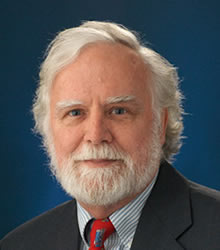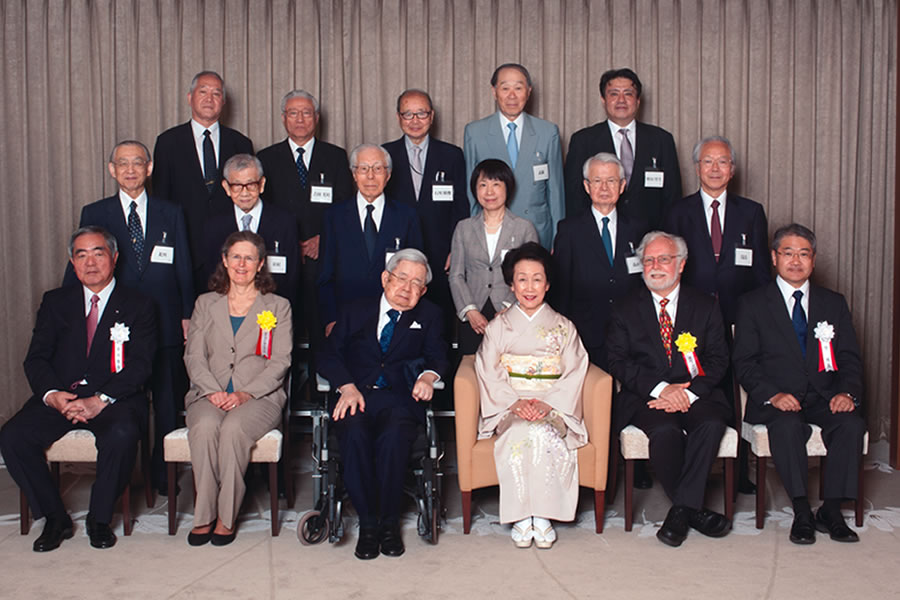The Awardee of the 2017 Prince Hitachi Prize for Comparative Oncology
"Widespread Transmission of Independent Cancer Lineages within Multiple Bivalve Species"
 Stephen P. Goff
Stephen P. GoffHiggins Professor of Biochemistry
Department of Biochemistry and Molecular Biophysics
Department of Microbiology and Immunology
Columbia University Medical Center
Personal History Outline
Dr. Stephen Goff was born in Providence, Rhode Island in 1951 and spent his childhood in a small town on the Massachusetts waterfront. He received his A.B. degree from Amherst College in 1973, graduating Summa Cum Laude, writing a thesis on the spectral properties and structure of the rhodopsin visual pigments. He then entered graduate school at the prestigious Department of Biochemistry at Stanford University, joining the laboratory of Nobel Laureate Paul Berg. At this time Stanford was developing breakthrough methodologies for the construction and propagation of recombinant DNA molecules. Dr. Goff focused on the replication of simian virus 40 and its use as a vector for the expression of foreign DNAs in mammalian cells, receiving his PhD with distinction in 1978. He also married fellow graduate student Marian Carlson, and acquired a lifelong interest in backpacking and rockclimbing in the nearby Sierra mountains..
Dr. Goff then moved back to the East Coast to do postdoctoral work as a Jane Coffin Childs Fellow in the laboratory of Nobel Laureate Dr. David Baltimore at MIT. His wife moved to MIT, also as a Jane Coffin Childs Fellow, to work on gene regulation in yeast. At MIT Dr. Goff first began work on retroviruses, which he continues to the present day. During his postdoctoral fellowship he cloned the genome of the Abelson murine leukemia virus, determined its structure, and used DNA probes from the viral oncogene to clone and characterize the c-abl proto-oncogene in the mouse genome. These studies revealed that the viral oncogene arose by transduction of a cDNA fragment of the cellular mRNA by the parental Moloney murine leukemia virus. Dr. Goff also cloned infectious DNA copies of the Moloney virus genome, enabling further genetic analyses by manipulation of the recombinant DNA.
In 1981, Dr. Goff moved to New York to join the faculty of the Department of Biochemistry and Molecular Biophysics at Columbia University College of Physicians and Surgeons, where he is presently the Higgins Professor of Biochemistry and an Investigator of the Howard Hughes Medical Institute. Dr. Carlson joined the faculty of the Department of Genetics at Columbia. Over more than three decades Dr. Goff has developed the Moloney murine leukemia virus as a genetic system. A major approach has been to create mutations in a cloned DNA copy of the viral genome, and to determine the effects of the mutations on the viral life cycle after transformation of mouse cells in culture. Dr. Goff also contributed to the first successful introduction of a gene disruption, or "knock-out" mutation, into the mouse germ line at a nonselectable locus. Dr. Goff’s current work is centered on the study of the retrovirus life cycle and the host restriction systems that inhibit virus replication. His lab identified and characterized a novel host protein, termed ZAP for zinc finger antiviral protein, that blocks gene expression of many viruses, including the murine leukemia viruses, Ebola, Sindbis, and HIV-1. The lab has also characterized a protein complex responsible for the silencing of retroviral DNAs in embryonic stem (ES) cells, and identified a zinc finger protein, ZFP809, as the ES-cell specific subunit that recognizes the proviral DNA.
Dr. Goff was recruited to study a leukemia-like disease of the Atlantic soft-shell clam Mya arenaria by Dr. Carol Reinisch, a marine biologist at the Woods Hole Oceanographic Institute. His laboratory discovered that the genomes of the neoplastic hemocytes had undergone a dramatic increase in the copy number of an endogenous retroelement they dubbed “Steamer.” Tests of DNAs of diseased animals from New York, Maine and Canada revealed that the tumor genotypes were all identical to each other, and were distinct from the genotypes of the affected host animal. The studies led to the astonishing conclusion that the disease resulted from the transmission of a contagious clonal cell line spreading from animal to animal. Subsequent work showed that the phenomenon is common to many species of molluscs. While most of these tumors are restricted to the species of their origin, one tumor, as a result of cross-species transmission, is now circulating in a species different from that of its origin.
Academic Achievement
Dr. Goff’s involvement with neoplasia in molluscs began with an email from Dr. Carol Reinisch, a marine biologist at the Woods Hole Oceanographic Institute who studies a leukemia-like disease, disseminated neoplasia, in the soft-shell clam Mya arenaria. The disease is manifested by a dramatic hyperplasia of cells in the hemolymph with high mitotic index, and is almost invariably fatal. The etiology of the disease had been mysterious, and suggestions included both environmental pollution and infectious agents. Experimental transmission of disease between animals by cells or cell-free hemolymph had been reported, consistent with the presence of some kind of infectious agent. Tests in Dr. Goff’s lab revealed that the hemolymph of the diseased animals often contained high levels of extracellular reverse transcriptase, suggestive of a retroviral infection. RNA preparations from cell-free hemolymph contained novel sequences with similarity to those of mammalian retroviruses. Dr. Goff and postdoctoral fellow Dr. Gloria Arriagada then used PCR primers based on these sequences to amplify and clone overlapping cDNAs spanning a contiguous 4 kb sequence, not encoding a retrovirus, but a novel retroelement they dubbed “Steamer”. The DNAs of the tumor cells were found to have undergone a massive amplification of Steamer insertions, with up to 150 new copies per genome.
To ask whether the new copies of Steamer might have activated expression of a host oncogene, postdoctoral fellow Dr. Michael Metzger cloned and sequenced a number of integration sites from various tumor DNAs. Surprisingly, the majority of the integration sites were identical in multiple tumors, suggesting the tumors might be clonally related. Genotyping proved this to be true. Examination of mitochondrial DNA single nucleotide polymorphisms (SNPs) and polymorphic microsatellite alleles showed that the genotypes of neoplastic cells did not match those of the host animal. Instead, neoplastic cells of animals from dispersed locations in New York, Maine, and Prince Edward Island (PEI), Canada, all had nearly identical genotypes that differed from those of the host. These results confirmed that the cancer is spreading between animals in the marine environment as a clonal transmissible cell derived from a single original clam.
Recently neoplasias in a variety of other species of molluscs were also found to have a similar basis. Dr. Goff and his colleagues discovered that the cancers in each species were caused by independent clones of cancer cells that were genetically distinct from their hosts. They also found that in one species, the carpet shell clam, the infectious clone of cancer cells was derived from a related but distinct species and resulted from a cross-species transmission. Dr. Goff’s work suggests that contagious cancers may be more common in nature than previously supposed, and can arise whenever there are routes of transmission and no immune system able to reject them.


